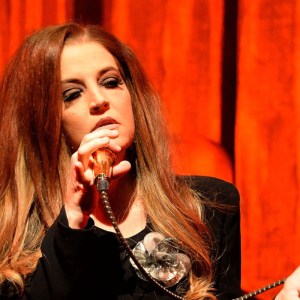Luciano Pavarotti was known as “The King of the High Cs.” He had sung “O Sole Mio” countless times and won the Grammy Award for Best Classical Vocal Performance in 1980 for his recording of the song. When he teamed up with José Carreras and Plácido Domingo and performed in Rome on July 7, 1990, they created The Three Tenors. When the trio performed “O Sole Mio,” it was a moment of improvisation and mutual respect. The Three Tenors would attain the level of worldwide fame that would rival the biggest rock bands. Let’s take a look at the meaning behind “O Sole Mio” by Luciano Pavarotti.
Videos by American Songwriter
Che bella cosa na jurnata ‘e sole
n’aria serena doppo na tempesta!
Pe’ ll’aria fresca pare gia na festa
Che bella cosa na jurnata ‘e sole
What a beautiful thing the day and the sun
calm air after a storm!
In the fresh air, it already looks like a party
What a beautiful thing in the sun
Composition
In 1898, Eduardo di Capua wrote “O Sole Mio” in Odessa (at the time part of the Russian Empire, now Ukraine) while on tour with his father’s band. It was later revealed the melody was one of 23 purchased from Alfredo Mazzucchi. In 1972, Mazzucchi’s daughter sought to have her father officially recognized as a co-composer of 18 of di Capua’s compositions, including “O Sole Mio. In 2002, a judge in Turin, Italy, ruled that Mazzucchi was a legitimate co-composer. The melody will continue to be copyrighted until 2042.
Ma n’atu sole
cchiu bello, oje ne’
‘o sole mio
sta ‘nfronte a te!
But not alone
what a beauty
my sun
it’s in front of you!
Many artists have performed the “O Sole Mio,” which translates to “O My Sun,” including Enrico Caruso, Andrea Bocelli, Richard Tucker, Mario Lanza, Rosa Ponselle and her sister Carmella, Bing Crosby, and Luciano Pavarotti.
Throat of a Bird
Pavarotti shared some advice about opera singing with Gramophone magazine in 2001, “Young tenors should take care not to force their voices. You shouldn’t enlarge the hole through which the voice comes. It should be like the throat of a bird. A bird is born with that voice and he never tries to push it, otherwise he loses it.”
Quanno fa notte e ‘o sole se ne scenne
me vene quase ‘na malincunia;
sotto ‘a fenesta toia restarria
quanno fa notte e ‘o sole se ne scenne
When it’s night and the sun goes down
I almost feel melancholy;
under your window would remain
when night falls, and the sun goes down
English Versions and Adaptations
Charles W. Harrison recorded the first English translation of the song. In 1921, William E. Booth-Clibborn adapted the melody, writing new lyrics for a hymn called “Down from His Glory.” In 1949, crooner Tony Martin recorded “There’s No Tomorrow” using the “O Sole Mio” melody with new lyrics written by Al Hoffman, Leo Corday, and Leon Carr.
A decade later, while in Germany, a U.S. Army Private named Elvis Presley heard Martin’s recording and made his own version. When he returned to the States, he requested new lyrics be written for the song. Aaron Schroeder and Wally Gold wrote “It’s Now or Never,” which would go on to be a worldwide hit. When Presley performed his version in concert, he often introduced the song with an explanation of its origin, including a few lines of “O Sole Mio” by Sherrill Nielsen. In 1981, John Schneider took “It’s Now or Never” all the way to No. 4 on the Billboard Hot Country Songs chart.
Ma n’atu sole
cchiu bello, oje ne’
‘o sole mio
sta ‘nfronte a te!
But there is no sun
what a beauty
my sun
it’s in front of you!
When you purchase through links on our site, we may earn an affiliate commission.
Photo by Jeff Brass/Getty Images
